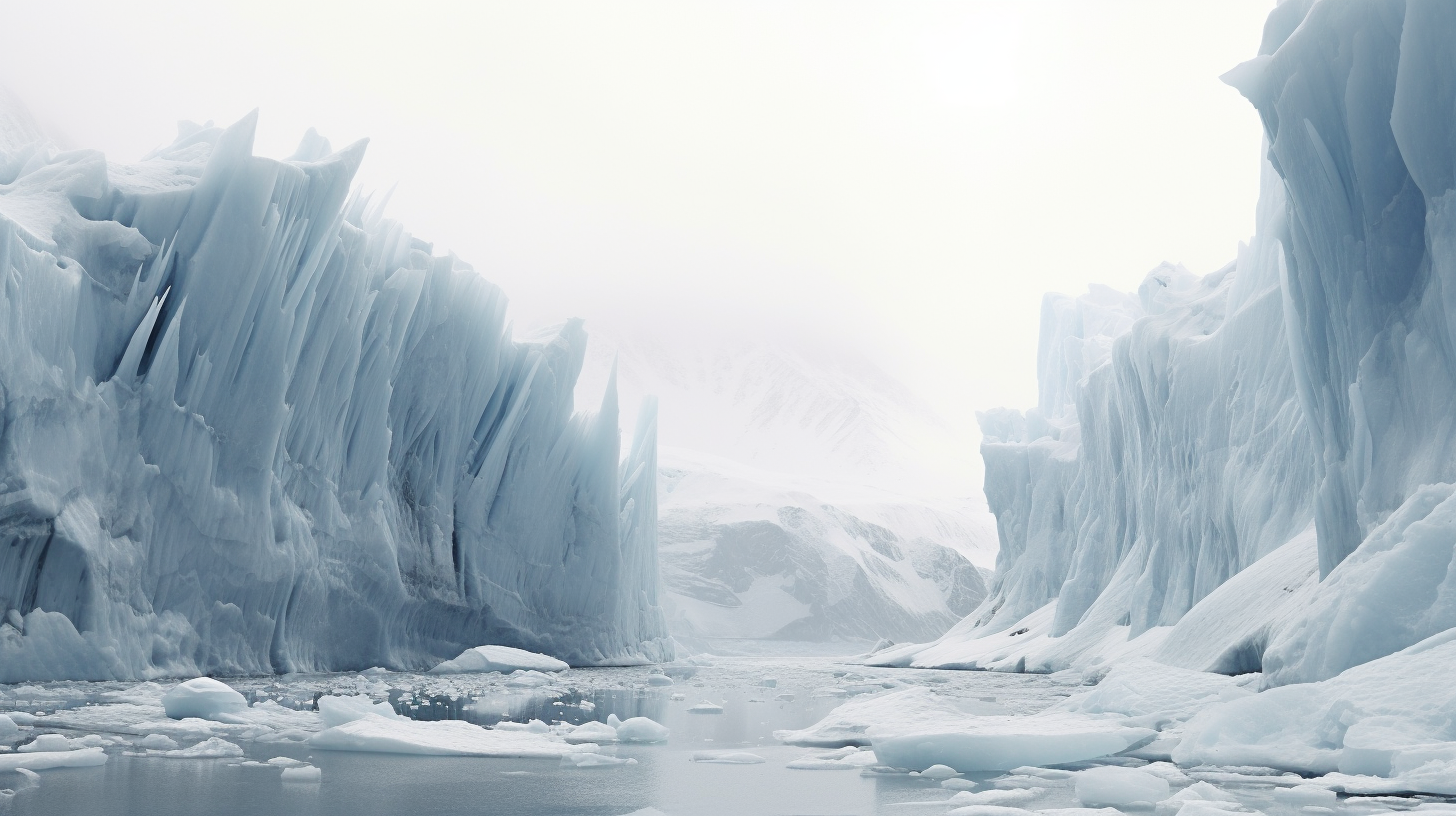In a silent symphony, the ice auditoria of the world solemnly perform their desolate anthem. Rivers of frozen time, once immovable in their icy grandeur, now weep tears of meltwater, adding a somber melody to the foreboding chorus of climate transformation. Lament the glaciers, for they sing the dirge of a planet’s past splendor, a haunting reflection of what is no more. This, dear readers, is the elegy of Earth’s vanishing glaciers — the chilling testament to a planet reshaped by human avarice.
Travel with us to the poles, where the frostbitten whispers of winter have been stifled by an unseasonably warm silence. In the midst of Antarctica’s white desert, great pillars of ice, towering architects of the primordial world, stand fractured and fragile. The Arctic, once the indomitable king of cold, wears a crown of dissolution, each day lessened, each moment closer to its final thaw.
The portrait painted herein is not one of unknown worlds or realms beyond reach. Scientists, with furrowed brows and somber data, have long forewarned us of the perils of ignoring the cry of these glacial giants. Ice cores, like ancient scrolls, unveil a history of centuries compressed into layers, telling tales that we have doomed ourselves to repeat through our defiance of nature’s delicate balance.
The causes are manifold: rampant industrialization, insatiable energy consumption, and short-sighted political maneuvering. The effects? Rising sea levels that threaten to engulf coastal cities, aberrant weather patterns that turn once fertile lands into dust bowls, and altered oceans — veins of our world — now pulsing erratically with the influx of fresh water.
The visual spectacle of calving glaciers, once a rare marvel, has become dreadfully commonplace, as icebergs birthed from ancestral ice sheets drift aimlessly in mourning waters. As they dissolve, they leave behind not just diminished habitats for polar fauna but a void where the Earth’s albedo — its ability to reflect solar radiation — once helped to moderate global temperatures.
Some herald the advent of green technologies and renewable energy as the saviors on the horizon. Yet, while commendable in their pursuit, there remains a dissonance between the rate of their implementation and the rapidity with which our glaciers retreat into memory. The persistent paradox lies in the irony that the very innovation meant to liberate us from environmental bonds often arrives too little, too late.
Conservation initiatives strive valiantly to salvage what splinters remain. Yet, can there be salvation? Or do our efforts merely echo in the void, a testament to our final understanding of a lesson taught too well by the vanishing ice — that some legacies are etched in frost, never to be reclaimed once melted?
The requiem plays on, and with each note, we are compelled to listen to the dying gasps of glacier behemoths. A symphony morphing into silence, the desolation spreads, as the planet heaves under the strain of change. ‘When Soil Turns to Stone’ and ‘The New Ice Age – Tomorrow’s Thawing Despair’ are but precursors to this mournful epic; they are the verses that set the stage for this, our current witness to the earth’s profound unraveling.
Yet you stand at the reader’s helm, facing the storm of this unfolding saga. Meet each line, each statistic, each heart-rending image with the resolution that, while the glaciers’ anthem may be of desolation, our actions need not add to its refrain. Where words reach their end, let action take the baton, orchestrating a future where glaciers find resurgence in the reverent whispers of ice once more.
